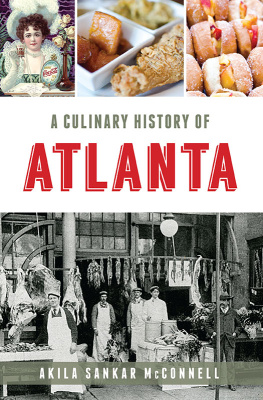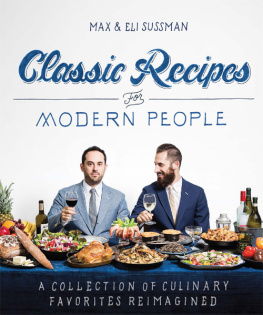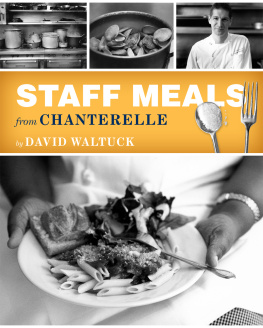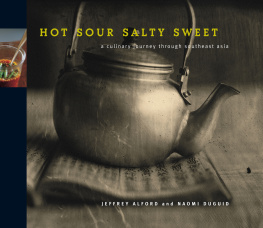Many wonderful people have helped make this book possible. Special thanks to the writers, without whose words this book would not have been possible.
My thanks to everyonefamily, friends, classmates, colleagues, and even strangerswho have not only supported Fictitious Dishes with great enthusiasm and voracious appetites but have also given me countless recommendations for new photos to take and new books to read. Thank you to Rob Giampietro, who encouraged me to begin this project in the first place. Many thanks to my research assistant, Rhiannon Marino, for indulging my love of minutiae, and to Juan Zambrano, for his amazing photo retouching work. Thank you to the dedicated and talented team at HarperCollins: Marta Schooler, Lynne Yeamans, Susan Kosko, Julie Hersh, Stephen Frankel, and particularly my superb editor and friend, Liz Sullivan, for her spirited collaboration and intense commitment to this book from the very beginning.
Thank you and love to my father, for teaching me to read carefully, and to my mother, for teaching me to look closely.
Finally, my gratitude and love to Joe, whose deep belief in this book, and me, is unwavering, and who inspires and encourages me to make better work every day.
The Adventures of Huckleberry Finn, Mark Twain, 1884. This classic follows the exploits of the title character as he sails down the Mississippi River on a makeshift raft with a slave boy named Jim.
Alices Adventures in Wonderland, Lewis Carroll, 1865. The fantastical experiences of young Alice, who follows a white rabbit with a pocket watch in his waistcoat, only to fall down a deep hole to arrive at a strange place called Wonderland.
The Amazing Adventures of Kavalier and Clay, Michael Chabon, 2000. The tale of two cousins who team up to create comic books together in New York City in the 1940s.
American Psycho, Bret Easton Ellis, 1991. The chilling story of Patrick Bateman, a wealthy young Wall Street investment banker turned serial killer in the late 1980s.
Anne of Green Gables, Lucy Maud Montgomery, 1908. The adventures and mishaps of Anne Shirley, an independent-minded red-headed orphan with a hot temper, living on a farm in Avonlea on Prince Edward Island, Canada.
Beezus and Ramona, Beverly Cleary, 1955. The first of the Ramona book series, this childrens book tells the story of Beatrice Beezus Quimby and her pesky four-year-old sister, Ramona.
The Bell Jar, Sylvia Plath, 1963. The semiautobiographical novel about Esther Greenwood, a promising young woman who struggles with depression and descends into crippling mental illness.
Big Two-Hearted River, Ernest Hemingway, 1925. In this short story, soldier Nick Adams returns to the remote place on Michigans Upper Peninsula where he used to go fishing before he served in World War I.
Blueberries for Sal, Robert McCloskey, 1948. Set in a town in Maine, this childrens picture book tells the story of a little girl named Sal who goes blueberry picking with her mother and encounters a mother bear and cub engaged in the same activity.
The Bluest Eye, Toni Morrison, 1970. A year in the life of Pecola Breedlovean African American girl living in Lorain, Ohio, in 1941as she faces racism and struggles with an inferiority complex as a result.
Bread and Jam for Frances, Russell Hoban, 1964. Beloved by picky and non-picky eaters alike, this childrens classic is about a young badger who decides she will eat nothing but bread and jam until, one day, she tires of it after having it for the sixth meal in a row.
The Catcher in the Rye, J. D. Salinger, 1951. A quintessential coming-of-age novel related mostly in the first person by the famous protagonist, teenager Holden Caulfield, after his expulsion from yet another prep school.
Chicken Soup with Rice, Maurice Sendak, 1962. A delightful childrens poem that celebrates eating chicken soup with rice every month of the year.
A Confederacy of Dunces, John Kennedy Toole, 1980. The comic story of Ignatius J. Reilly, a slovenly thirty-year-old neer-do-well who lives with his mother in New Orleans.
The Corrections, Jonathan Franzen, 2001. This novel relates the intertwined stories of the Lamberts, a dysfunctional and repressed Midwestern familyas they prepare to spend one last Christmas together in their Ohio home.
East of Eden, John Steinbeck, 1952. Inspired by the story of Cain and Abel, this book tells the enmeshed stories of two California families, the Trasks and the Hamiltons, and examines humankinds perpetual struggle between good and evil.
Emma, Jane Austen, 1815. Austens classic chronicles the exploits of wealthy twenty-year-old Emma Woodhouse, who has sworn off marriage yet fancies herself a talented matchmaker for others.
Fear and Loathing in Las Vegas, Hunter S. Thompson, 1971. The story of Raoul Duke (a loosely veiled version of Thompson himself) and his lawyer, Dr. Gonzo, as they make their drug-addled way to Las Vegas on assignment for Sports Illustrated and instead binge on recreational drugs.
The Girl with the Dragon Tattoo, Stieg Larsson, 2005. The story of journalist Mikael Blomkvist, who teams up with computer hacker Lisbeth Salander to catch a serial killer in Sweden.
Gone with the Wind, Margaret Mitchell, 1936. The saga of a proud, rich, and beautiful Southern belle, Scarlett OHara, and her romantic liaisons with Ashley Wilkes and Rhett Butler during the Civil War and Reconstruction.
Gravitys Rainbow, Thomas Pynchon, 1973. Narrative and character shatter as Tyrone Slothrop, a US Army lieutenant, travels deeper into Europe during World War II to uncover the secret of the Nazis classified new rocket (the V-2) in this complex and experimental novel.
The Great Gatsby, F. Scott Fitzgerald, 1925. The story of the fabulously wealthy Jay Gatsby and his pursuit of the American Dream in the Roaring Twenties.
Gullivers Travels, Jonathan Swift, 1726. A satire that recounts the sea adventures of Lemuel Gulliver, whose journey takes him to various unusual and outlandish places.
Heartburn, Nora Ephron, 1983. Rachel Samstedt, a cookbook writer who discovers that her husband, Mark, is having an affair, humorously relates how she copes with the aftermath.
Heidi, Johanna Spyri, 1880. The tale of a cheerful and selfless orphan girl sent by an uncaring aunt to the top of a mountain in the Swiss Alps to live with her reclusive grandfather.
Hopscotch, Julio Cortzar, 1963. The story of Horacio Oliviera and his lover, who live in Paris and refuse to plan their encounters, instead waiting for coincidence to align them in time and place; and later what happens when Horacio returns to Buenos Aires and reconnects with his childhood friend Manolo Traveler.
The Lion, the Witch and the Wardrobe, C. S. Lewis, 1950. The first novel in C. S. Lewiss seven-volume series, The Chronicles of Narnia, follows the adventures of four childrensiblings Peter, Susan, Edmund, and Lucywho stumble upon an enchanted wardrobe that leads them into the magical land of Narnia.
Little Women, Louisa May Alcott, 186869. The coming-of-age story of the four March sistersMeg, Jo, Beth, and Amyin Concord, Massachusetts, in the late 1800s, relating their daily activities, financial difficulties, family emergencies, illnesses, and love interests.
Lolita, Vladimir Nabokov, 1955. This celebrated and controversial novel is the story of the unruly obsession and subsequent love affair of a middle-aged professor, Humbert Humbert, with his twelve-year-old stepdaughter.












